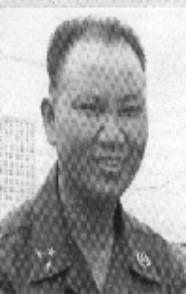
|
Hmong GeneralVang Pao |
1950-1970s, Southeast Asia: Drug Lords and Covert Wars
By Alfred McCoy, Professor of Southeast Asian history, University of Wisconsin.
In a very important accident of history, the Iron Curtain came crashing down along the Asian opium zone that stretches for five thousand miles from Turkey to Thailand, making these rugged, opium-producing highlands a key front of Cold War confrontation. During the Cold War, the CIA and allied agencies mounted operations in this opium zone. It found that ethnic warlords were its most effective covert action assets.
These leaders exploited the CIA alliance to become drug lords; expanding opium production and exporting heroin. The CIA tolerated this and blocked investigations. Since ruthless drug lords made effective anti-communists, and heroin profits amplified their power, CIA agents did not tamper with the requisites of success.
Southeast Asia was the site of the earliest CIA alliances with drug lords. On the eve of World War II, most Southeast Asian governments sponsored state monopolies that sold opium to registered addicts and generated substantial tax revenues. Southeast Asia was a major opium consumer but, a very minor opium producer. In 1940, Southeast Asia harvested only 15 tons. Today, it produces over 3,000.
Since British colonial India supplied the colonial governments in Southeast Asia with limitless, low-cost opium, these governments had no reason to encourage local opium production. The sudden growth of the Golden Triangle's opium production in the 1950s appears to be a response to two stimuli: prohibition and protection.
When Southeast Asia's governments closed the legal opium dens, between 1950 and 1961, this created a sudden demand for illicit opium.
Burma and Thailand
An alliance of three intelligence agencies, Thai, U.S. and Nationalist Chinese, played a catalytic role in promoting the production of raw opium on the Shan Plateau of northern Burma. In the early 1950s, CIA covert operations in northern Burma fostered political alliances that inadvertently linked the poppy fields of northern Burma with the region's urban drug markets. After the collapse of the Nationalist Chinese government in 1949, some of its forces fled to Burma.
To retaliate against communist China for intervening in the Korean War, President Truman ordered the CIA to organize and equip the Nationalist elements in Burma for invasions of China. The idea was that the masses of southwest China would rise up in revolt against communism, China would pull its troops out of Korea and U.S. troops in Korea would be saved. It was one of the U.S government's most disastrously foolish operations.
After their 1950 invasions were repulsed with heavy casualties, Nationalist troops camped along the border for another decade. They financed their operations by with a massive increase in opium production on Burma's Shan Plateau. By the early 1960s, when this CIA operation finally ended, Burma's opium production had risen from 15 to 300 tons, thus creating the opium zone now called the Golden Triangle. After the Burmese army evicted them in 1961, they established a base camp in Thailand and dominated the Burma opium trade until the mid-1980s.
Vietnam and Laos
During their Vietnam War, the French military integrated opium trafficking with covert operations in a complex of alliances. After abolition of the opium monopoly in 1950, the French military imposed centralized covert controls over an illicit drug traffic linking the Hmong tribal poppy fields of Laos with the opium dens in Saigon. This funded French covert operations during their Vietnam War from 1950 to 1954.
When the U.S. replaced the French in Vietnam after 1954, the CIA inherited these covert alliances and their involvement in opium trading. In Laos during the 1960s, the CIA battled communists with a secret army of 30,000 Hmong highlanders. Although the CIA did not profit directly from the drug trade, the combat strength and covert action effectiveness of its secret army was nonetheless integrated with the Laotian opium trade.
Between 1965 and 1970, the Hmong guerrillas recovered downed U.S. pilots, battled local communists, monitored the Ho Chi Minh Trail and, most importantly, protected the radar that guided the U.S Air Force bombing of North Vietnam.
The CIA gave Hmong General Vang Pao, control over all air transport into Hmong villages in northern Laos - the shipment of rice into the villages and the transport of opium, the tribe's only cash crop, out to markets.
In 1968-1969, CIA assets opened heroin laboratories in the Golden Triangle where Burma, Thailand and Laos converge. When Hmong officers loaded opium on the CIA's Air America and the Lao army's commander-in-chief opened a heroin lab to supply U.S. troops in South Vietnam, the CIA was silent.
By 1971, according to a White House survey, 34% of U.S. troops in South Vietnam were heroin addicts. Instead of restraining drug trafficking by its Laotian assets, the CIA covered it up. In 1971, I went to Laos to investigate. The Lao army commander opened his opium account books to me, but the U.S. Mission stonewalled. In a Hmong village, when we investigated opium shipments on Air America, a CIA operative threatened to murder my interpreter. When my book The Politics of Heroin was in press, the CIA's Deputy Director for Plans pressured my publisher to suppress it. The CIA's General Counsel demanded deletions of all references to CIA complicity. After my book was published intact (1972), the CIA's Inspector General conducted an investigation that confirmed the core of my allegations.
Source: Testimony at a seminar convened by Rep. John Conyers, 1997. www.north-coast-xpress.com/~doretk/Issues/97-06%20JUN/ciacovert.html

|
Hmong GeneralVang Pao |